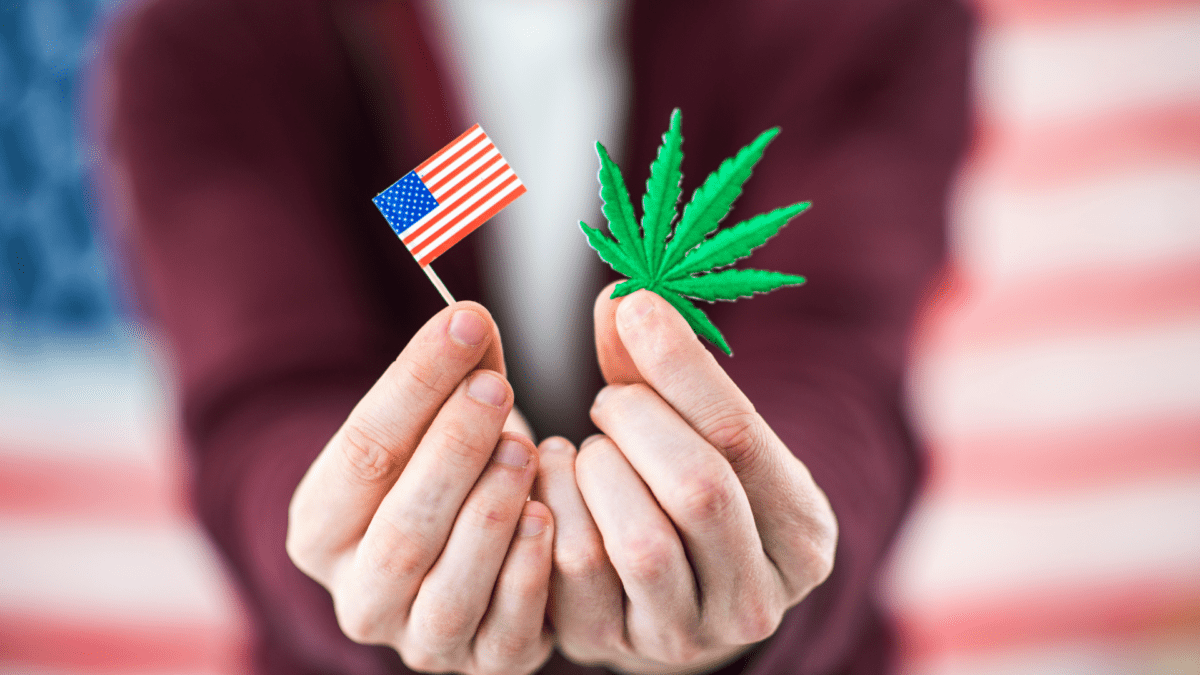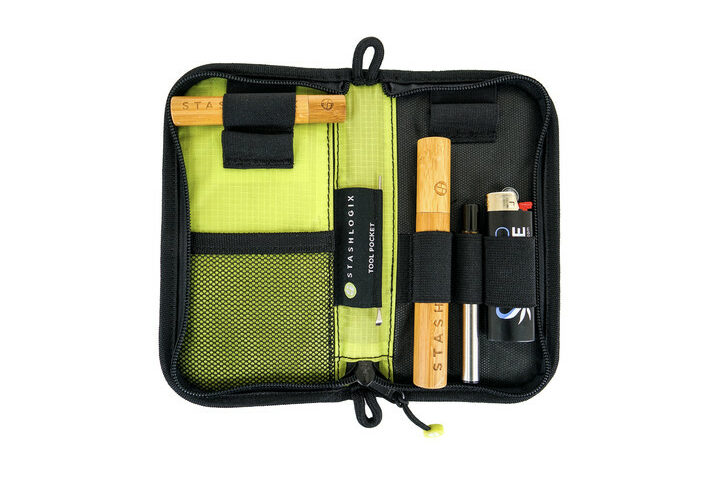For many women, there are several questions surrounding the potential benefits and uses for cannabis or hemp products to alleviate symptoms that may occur while pregnant, nursing, or during the postpartum period. While clinical research is limited, observational studies have taken place. Here we will discuss some significant findings from those studies as well as discuss the role the endocannabinoid system plays during these specific stages of life.
The endocannabinoid system (ECS) has shown to be present throughout all steps of pregnancy, from fertilization to implantation and parturition. The ECS is the largest neurotransmitter system in the body, comprised of the main endogenous cannabinoids anandamide (AEA) and 2-arachidonoyl glycerol (2-AG), the cannabinoid receptors CB1 and CB2, and the metabolizing enzymes.
Pregnancy
The molecular mechanisms of how the ECS participates in different stages of pregnancy are not well understood. However research tells us that we have learned some of its involvement. During the process of implantation, studies in mice have shown a balance between AEA synthesis and degradation is necessary to ensure that AEA levels are not too high or too low during implantation. AEA metabolic enzymes are also expressed during human placental development and the whole ECS is shown to be present in mouse placentae. As the onset of labor approaches, AEA levels increase dramatically. This knowledge gives promise to targeting the ECS as a potential pharmacological strategy, however the complexity of the reproductive system is said to make it difficult to predict the effects of therapeutic interventions.
When it comes to cannabinoid therapy as a therapeutic intervention, clinical research on cannabis in general during pregnancy has historically proven difficult thanks to confounding variables such as the use of prenatal care, maternal age, and concurrent use of other illicit drugs, tobacco, or alcohol. On the other hand, cannabidiol (CBD) is being actively studied for it’s usage in pain management, neuropsychiatric disorders and is proposed to provide therapeutic benefits for nausea and vomiting, irritable bowel syndrome, symptoms of multiple sclerosis, traumatic brain injuries and more. Large, comprehensive studies on CBD usage in pregnant patients are limited despite the federal legality with the 2018 Farm Bill and growing interest among the general population.
Cannabis has long been the most commonly consumed of illicit substances by pregnant women. Though cannabis in general has conventionally been considered harmful to both those who consume it and any potential offspring, more recent research has indicated that at least some individual components of the plant actually provide an array of clinical benefits, such as antinausea, and with few side effects.
Three studies were carried out in Great Britain (over 12,000 women enrolled), France (13,545 women enrolled), and Australia (25,073 women enrolled) among women who were pregnant with one child. In all three studies, the cannabis user groups also had higher rates of alcohol, tobacco, and/or other illicit substance use while pregnant.
All three studies found that the cannabis-user group had results of lower birth rate. In the study carried out in Great Britain, after adjustments took place for confounding variables, it was determined that babies delivered by mothers who used cannabis at least once per week weighed on average 3oz (90g) less than babies delivered by non-cannabis users.
One longitudinal study took place on the development of 59 Jamaican children, from birth to age 5 years, to determine the effects of cannabis use by a pregnant woman on her child. At the start of this study, about one-half of the sample used cannabis during pregnancy and were matched with non-users according to age, parity, and socioeconomic status. Following birth, testing of children was done at 1, 3, and 30 days of age and again at ages 4 and 5 years. Data about the child’s home environment and temperament were collected from direct observations as well as from standardized questionnaires. The results showed no significant differences in developmental testing outcomes between children of cannabis-using and non-using mothers except for at 30 days old, where the babies of users had more favorable scores with autonomic stability and reflexes. The scores at ages 4 and 5 were significantly correlated to certain aspects of the home environment and to regularity of basic school attendance.
CBD in particular, has been the focus of much current research, since it is non-euphoric and non-addictive, while eliciting therapeutic actions in well understood ways. Despite increased insight into the clinical use for pediatric and adult patients, very little is known of how CBD alone might impact pregnancy or fetus.
Cannabinoids, including CBD, readily cross the placental barrier. There have been suggestions through studies that fetal exposure to cannabinoids may reduce the proper development of the immune system and the microbiome, however there is extremely limited data on the effects of CBD during pregnancy. There are concerns about the actions of CBD having adverse effects during pregnancy. For example, the anti-angiogenic benefits for individuals with tumors may affect human umbilical vein endothelial cells. There are also concerns about it modulating the immune system by altering cytokine levels, affecting apoptosis. However, further studies need to be performed to support these concerns. And, meanwhile, potential benefits have been seen across a few rodent studies.
One study investigated the anti-inflammatory benefits of CBD on gastroschisis in rat fetuses when administered to mothers. This malformation, where the baby’s intestines are found outside the baby’s body through a hole beside the belly button, is seen in approximately 1/4000 live births worldwide. Current treatments through maternal administration show to be effective but have undesirable side effects and increased risk of infection. The CBD group of fetuses in this study, showed a marked decrease in inflammation by all measures, suggesting CBD shows promise as a future therapy.
Long known to be a non-psychoactive component of the cannabis plant, CBD has recently been indicated to be antipsychotic as well, reducing the intoxicating effects of THC when consumed together. Researchers wanted to see if CBD could be used as an antipsychotic drug (APD) since traditional pharmaceutical options carry the risk of considerable side effects to mom and fetus. To test the efficacy of CBD, a group of pregnant rats were infected with a virus commonly used in research for its ability to induce a set of symptoms in the resulting offspring that mirror the symptoms found in schizophrenia. Not only did the CBD provide as many antipsychotic benefits as current APDs but there were also fewer side effects. Additionally there were improvements in the rats cognition, which is an area mainline antipsychotics have not been able to address thus far.
While there is a balance of concern and promise, one thing is certain that further, larger studies are needed to elucidate the safety of cannabis and CBD use during pregnancy.
Nursing
Just as cannabinoids may pass through the placenta, they also pass through breast milk resulting in neonatal exposure.
There is a difference in opinion due to the limited data that is available. One study demonstrated that the excretion of THC, specifically, into breast milk was estimated at 0.8% of the mother’s weight-adjusted dose per kilogram. Another study reported this concentration at an average of 2.5% of the maternal dose with levels significantly dropping 4 hours post-inhalation. Cannabis concentration in breast milk is related to maternal dose, frequency of dosing, method of administration, and the lipophilicity of the breast milk.
There is also conflicting data regarding the outcomes of infants exposed during breastfeeding. In one study, 136 breast-fed infants were assessed at one year for motor and mental development, finding that the 68 exposed infants had decreased slightly in motor development compared to the controls depending on the dose, however no effect was found on mental development. The majority of the cannabis user group nursed on average for 3 months.
In another study, 27 exposed infants compared to 35 unexposed infants showed no differences in motor and mental skills one year later. Among those 27 mothers, 12 had smoked once per month, 9 smoked weekly, and 6 smoked daily.
An additional study included 50 women who reported using cannabis in the prior 14 days to donating milk. THC was detectable in 66% of the samples and below the limit of quantification in 32% of the samples. Preliminary evidence found no differences in infant adverse reactions, postnatal growth, or neurodevelopmental outcomes between the groups.
Due to these differing studies that are available, the Academy of Breastfeeding Medicine states that clinicians should consider the wide range of occasional, regular medical, and heavy cannabis users when breastfeeding occurs with cannabis use.
Postpartum
Research has primarily focused on THC while breastfeeding as opposed to CBD. However women who are experiencing postpartum anxiety or depression may be curious if CBD is an option for them if they are not breastfeeding, or a safe(r) option for them if they are.
As noted before, cannabinoids are able to pass through breastmilk. There is anecdotal evidence to support early exposure of CBD to infants who suffer with debilitating conditions such as epilepsy, cancer, or autoimmune disorders. However, the research to support early exposure of CBD to healthy infants to determine long term effects is not readily available. In published research, early exposure to CBD has been seen among zebrafish, rodents, and sea urchins. Among the zebrafish, exposure to CBD affected metabolism, growth, expression of genes, survival, and reproduction into old age. There were benefits such as increased rates of survival and reduced inflammation among males and females and negative outcomes such as decreased sperm production among males.
The ECS has been realized as a target for depression as it is important for daily regulation of many basic functions such as cognition, perception, sleep, pain, appetite, reward, as well as endocrine, cardiovascular, and immune responses. There is increasing evidence supporting the role of the ECS in the neurobiology of depression, specifically as it can regulate hypothalamic-pituitary-adrenal (HPA) axis activity and it plays a role in the pathophysiology of major depressive disorder (MDD).
In a rodent study, experiments indicated the oral administration of CBD to have the potential to reduce depressive-like behaviors. Like-studies have confirmed that CBD exhibited anti-anxiety and antidepressant effects in animal models as well as a good interaction between CBD and the 5-HT1A neuroreceptor.
Self-reported observational studies and open label studies among humans have shown similar findings with lessening the severity of depression, higher overall quality of life scores, and improvement in cognitive functions.
Postpartum anxiety can be just as debilitating as postpartum depression, where the ability to complete everyday tasks or experience restful sleep can be greatly interfered with. Pre-clinical research using animal models with fear and anxiety-like behaviors have found antianxiety, antistress, anti-compulsive, and the reduction of fight-like stress response effects with CBD. Preliminary studies among humans using both healthy volunteers and individuals with social anxiety disorder also suggests CBD’s antianxiety effects. Overall evidence supports a possible role for CBD as a novel therapy for depressive and/or anxiety disorders.
Although the research thus far for CBD use to alleviate postpartum symptoms is promising, future clinical studies are necessary to determine long-term safety, potential drug interactions, the most effective route of administration, and appropriate doses for conditions.
Starting your cannabinoid therapy journey
If you choose to incorporate cannabinoid therapy into your routine while pregnant, nursing, or in the postpartum stage, it is advised by Realm of Caring to first consult with a medical professional. CBD, as well as other cannabinoids, may interact with other pharmaceuticals being taken. As well, there is the potential for drug tests to be performed during delivery of a baby where legal ramifications could be of concern for the mother if there is a THC-positive test.
For any questions about cannabinoid therapy in general, our care specialists are here to talk with you one-on-one. Reach out by calling 719-347-5400 or emailing info@realmofcaring.org.

Disclaimer
The Realm of Caring Foundation specifically invokes the first amendment rights of freedom of speech and of the press without prejudice. These statements have not been evaluated by the food and drug administration. the products discussed are not intended to diagnose, cure, prevent or treat any disease. Realm of Caring always recommends when and wherever possible that licensed local healthcare professionals be consulted.
The Realm of Caring Foundation is an independent nonprofit with its own governing board. We do not produce or sell cannabinoid products, nor do we receive funds from the sale of other company’s products.














